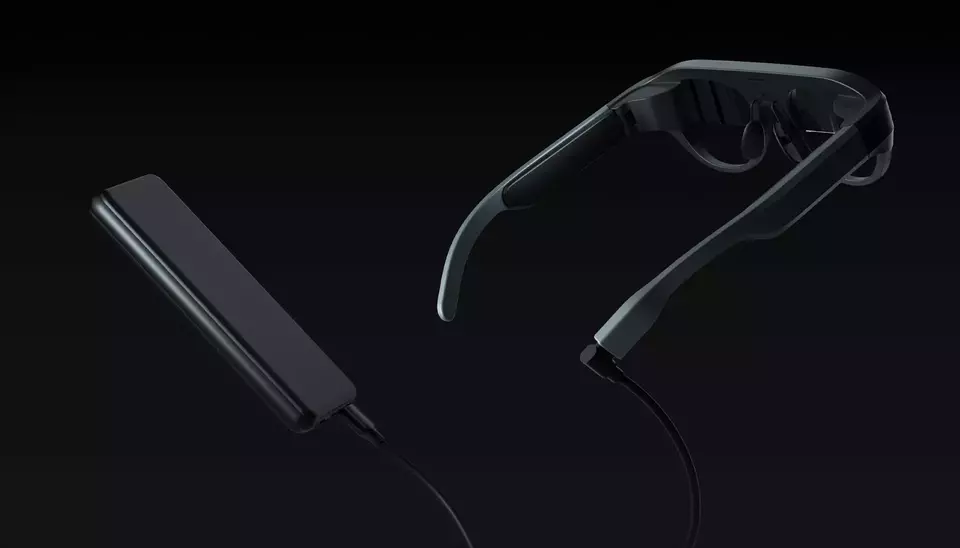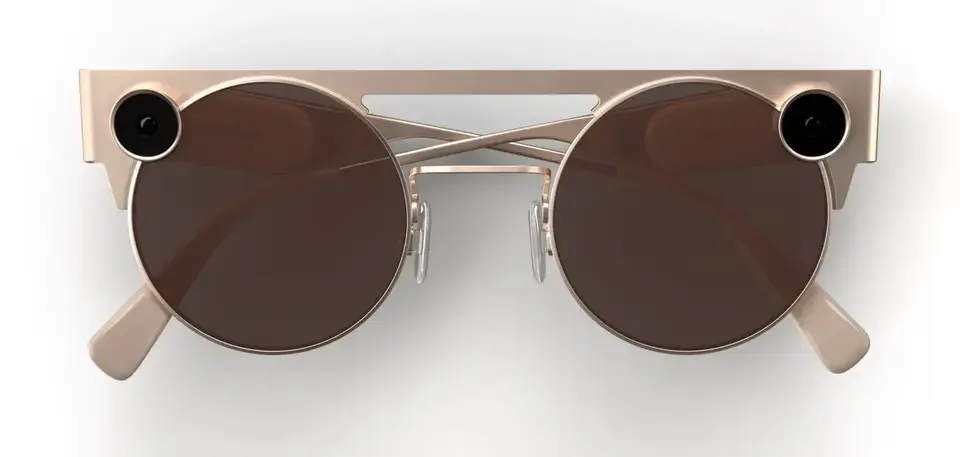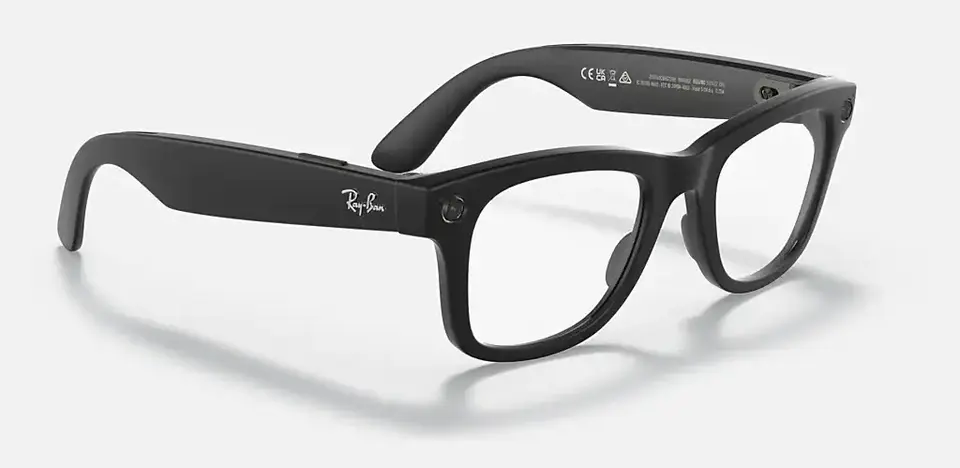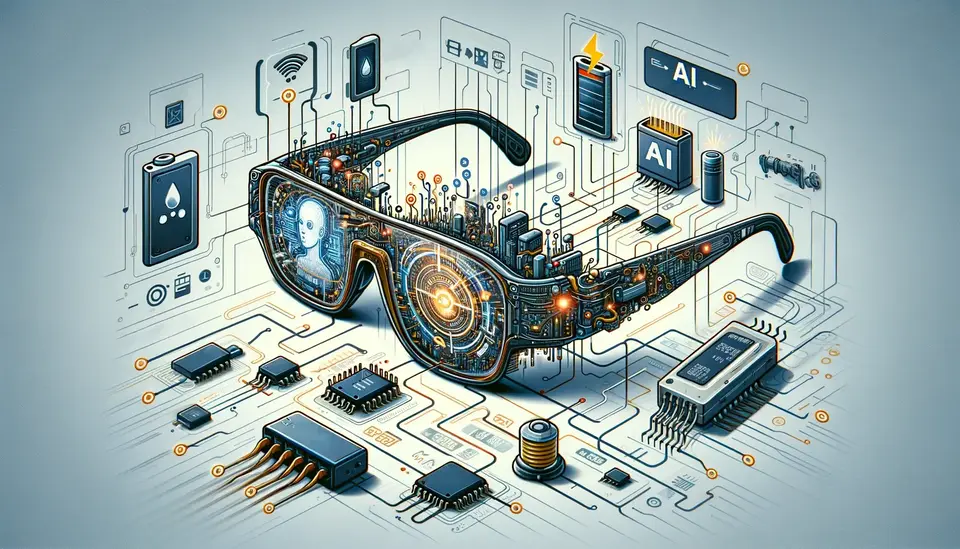Disadvantages of Smart Glasses
Posted on September 5, 2023 21 minutes 4280 words
Table of contents
- Introduction: Unveiling the World of Smart Glasses
- 1. Privacy Concerns: The Double-Edged Sword of Advanced Technology
- 2. Health and Safety Issues: The Unseen Costs of Wearable Tech
- 3. Usability and Accessibility: Navigating the Practical Challenges of Smart Glasses
- 4. Social and Aesthetic Factors: Beyond the Practicality of Smart Glasses
- 5. Environmental Concerns: The Hidden Costs of Smart Glasses
- 6. Aesthetic and Comfort Issues: When Technology Clashes with Personal Style and Comfort
- 7. Economic Implications: Navigating the Financial Terrain of Smart Glasses
- 8. Economic Implications: The Financial Landscape of Embracing Smart Glasses
- Conclusion: Reflecting on the Dual Sides of Smart Glasses
Introduction: Unveiling the World of Smart Glasses
The Genesis of Smart Glasses
In a world where technology is constantly striving to blend seamlessly with human experience, smart glasses stand out as a quintessential example. At their core, smart glasses are eyewear equipped with integrated technology, designed to augment our reality, facilitate communication, and streamline information access, all without the need to glance at a traditional screen.
From Sci-Fi to Reality: The Evolution of Smart Glasses
What was once the realm of science fiction and speculative tech has transitioned into tangible products in the hands (or rather, on the faces) of consumers. Think of those iconic scenes in movies where characters access data, communicate, or navigate via their futuristic eyewear. That’s no longer just movie magic. Over the past decade, notable tech giants and innovative startups alike have embarked on missions to bring smart glasses into the mainstream market, each iteration promising more sophisticated features than the last.
Rising Popularity: Not Just Another Tech Gadget
As with all technology, novelty alone doesn’t guarantee success or widespread adoption. However, smart glasses have started carving a niche for themselves, finding utility in a range of scenarios:
-
Professional Domains: From doctors receiving real-time patient data during procedures to engineers visualizing complex schematics hands-free.
-
Personal Use: Users can get navigation directions, read messages, or even capture moments without reaching for their smartphones.
-
Entertainment: Augmented reality games or immersive media experiences take a front seat.
These versatile applications showcase the potential and appeal of smart glasses. Their adoption rate isn’t merely about a new tech trend—it’s a testament to the evolving nature of how we interact with digital information.
The Other Side of the Coin: Understanding Their Drawbacks
While the allure of smart glasses is undeniable, it’s essential to approach them with a balanced perspective. As with any revolutionary technology, they bring along a slew of questions and concerns. This article seeks to delve into the disadvantages of smart glasses, not to diminish their value, but to provide a comprehensive understanding of what users and observers should be aware of.
With this foundation laid, let’s navigate the multifaceted world of smart glasses, understanding the challenges they pose amidst their evident benefits.
1. Privacy Concerns: The Double-Edged Sword of Advanced Technology
The Era of Ever-Watchful Eyes: Surveillance and Unauthorized Recording
Smart glasses possess an almost spy-like quality, a discrete camera and the capability to record with a mere blink or subtle command. While this offers unparalleled convenience to the user, it equally raises serious ethical concerns.
-
The Invisible Camera: Traditional cameras or smartphones make it evident when someone is recording, but with smart glasses, it’s not always apparent. This covert nature can lead to invasions of privacy, as individuals might be recorded without their knowledge or consent. Such unauthorized recordings in private settings, or capturing sensitive moments, can have profound personal and legal implications.
-
Public Spaces Aren’t Exempt: Even in public areas, where individuals might expect to be on camera, the ambiguity of smart glasses can lead to discomfort. There’s a vast difference between a noticeable CCTV camera on a street corner and an unassuming individual with smart glasses capturing the surroundings.
In the Labyrinth of Data: Collection, Use, and Monetization
The modern era is often dubbed the ‘data age,’ and not without reason. Data is the new gold, and smart glasses are yet another mine for tech companies.
-
Endless Streams of Information: Every interaction, gaze, search, or command made using smart glasses can be stored, creating a highly personalized profile of the user. This data is not just about what users are looking at, but potentially how they feel about it—gauged from how long they gaze, their pupil dilation, and more.
-
Monetization and Targeting: This data can be a goldmine for advertisers. Imagine walking past a store, glancing at a product, and then receiving targeted ads about that very product on other platforms. The convergence of physical and digital data can make advertising more invasive and pervasive.
-
User Agreement Caveats: While users often have control over their data, it’s buried deep within lengthy user agreements. The fine print might allow companies to store, analyze, or share this data in ways that the average user might not fully comprehend or agree with.
Beware of Digital Prowlers: Hacking Vulnerabilities
The sophistication of smart glasses isn’t restricted to their legitimate uses. They are equally attractive targets for hackers.
-
Personal Data at Risk: Smart glasses can store or have access to a plethora of personal data, from private messages to bank details. A successful hacking attempt can expose this information.
-
Real-Time Spying: More sinister than just data theft, if hackers gain control over the smart glasses’ camera or microphone, it can lead to real-time surveillance. The wearer becomes an unwitting spy, capturing sensitive information from their surroundings.
-
Weak Links in the Chain: While the glasses themselves might have robust security, they often sync with other devices or cloud accounts. Any vulnerability in these linked systems can provide a backdoor entry to the glasses.
In essence, the very features that make smart glasses innovative and appealing also render them a source of multiple privacy concerns. It’s a delicate balancing act between convenience and security, one that both manufacturers and users must be acutely aware of.
2. Health and Safety Issues: The Unseen Costs of Wearable Tech
The Paradox of Augmented Reality: Distractions in a World of Enhanced Vision
As smart glasses overlay digital content onto the real world, they introduce a new dimension of stimuli. While this promises enhanced interactions, it also brings forth significant distractions.
-
The Road Ahead: Driving demands undivided attention. Introducing notifications, messages, or augmented data while driving can pull away this critical focus, leading to delayed reactions or missed threats. Even if smart glasses offer navigation help or traffic data, the risk of visual or cognitive overload cannot be ignored.
-
Pedestrian Perils: It’s not just drivers who face risks. Pedestrians engrossed in their smart glasses might miss traffic signals, oncoming vehicles, or other hazards. In urban environments, where split-second decisions matter, such distractions can prove fatal.
Peering Too Close: The Issue of Eye Strain
The human eye wasn’t designed for prolonged focus on close-up digital screens. Yet, that’s precisely what happens with continuous smart glasses usage.
-
Digital Eye Fatigue: Regularly shifting focus between the digital data and the real world can tire the eyes. Symptoms can include dryness, itchiness, blurred vision, and even headaches.
-
Long-term Implications: The long-term effects of consistent use remain a topic of research. However, concerns about the potential for exacerbating issues like myopia (short-sightedness) or other visual disturbances are genuine.
-
Adjustment Period: Like transitioning to a new pair of prescription glasses, there’s an adjustment period with smart glasses. Not everyone finds this transition smooth. For some, it might lead to dizziness or disorientation, especially if the augmented data doesn’t align perfectly with their natural vision.
Unseen Waves: Radiation Concerns and Electromagnetic Fields
In our wireless world, concerns about the effects of prolonged exposure to electromagnetic fields (EMF) are rising. Smart glasses, being wearable and close to the eyes and brain, intensify these worries.
-
Constant Connectivity: For many of their functions, smart glasses rely on wireless connectivity, be it Wi-Fi, Bluetooth, or cellular networks. This means they’re continually emitting and receiving electromagnetic signals.
-
Prolonged Exposure: Unlike smartphones, which can be placed away from the body when not in use, smart glasses are worn directly on the head, leading to close and extended exposure. Although the levels of radiation might be low, the cumulative effect over time is a topic of ongoing debate and research.
-
General Concern: It’s essential to note that the apprehension about EMFs isn’t unique to smart glasses. Other wearables, like smartwatches or fitness trackers, also come under this scrutiny. While conclusive evidence on low-level, long-term exposure is still pending, it’s a concern that both users and manufacturers need to consider seriously.
In conclusion, while smart glasses promise a future of enhanced reality and seamless integration of tech into daily life, they are not without their health and safety challenges. Recognizing these potential pitfalls is the first step towards creating solutions that allow users to reap the benefits without compromising their well-being.
3. Usability and Accessibility: Navigating the Practical Challenges of Smart Glasses
The Augmented Learning Curve: Grappling with a New Reality
Every piece of technology comes with a learning curve, but smart glasses, with their blend of the physical and digital worlds, present unique challenges.
-
Intuitive or Intimidating: The interface of smart glasses, while designed to be intuitive, can be daunting for some. Unlike traditional screens with touch, keyboard, or mouse inputs, smart glasses might rely on voice commands, head movements, or even eye-tracking. Mastering these controls—and doing so subtly in public spaces—can take time.
-
Information Overload: While the augmented reality (AR) feature can superimpose helpful data onto real-world scenes, it can also bombard users with too much information. Discerning critical notifications from non-essential ones requires adjustment.
-
Generational Gaps: Older generations, who might not be as tech-savvy, could find the transition to such a high-tech device more challenging compared to digital natives who have grown up in an era of rapid technological evolution.
Powering the Future: The Limitations of Battery Life
As technology progresses, the thirst for power grows. Smart glasses, despite their innovative features, are bound by the constraints of current battery technology.
-
Daily Dependence: While traditional eyewear is a wear-and-forget accessory, smart glasses require regular charging. This can be a significant inconvenience, especially for users who are always on the go or forgetful about charging.
-
Feature Compromise: To conserve battery life, users might need to limit some of the more power-intensive features, effectively reducing the utility of the glasses.
-
Weight and Comfort: Incorporating a battery that lasts long while keeping the device lightweight is a challenge. Bigger batteries can add to the weight, making the glasses uncomfortable for prolonged wear.

Playing Well with Others: Compatibility Concerns
In an age of interconnected devices and platforms, compatibility is crucial. Smart glasses, being relatively new entrants, face their share of integration challenges.
-
Software Snags: Not all applications or software are designed for AR or smart glasses interfaces. Users might find that their favorite apps or tools don’t function seamlessly—or at all—on their new device.
-
Device Dilemmas: Smart glasses often work in tandem with other devices, especially smartphones. However, not all glasses might be compatible with all phone models or operating systems, limiting functionality or requiring additional investments in compatible devices.
-
Future-Proofing: As technology evolves, there’s a risk that earlier models of smart glasses might not support newer applications or updates. This can lead to forced obsolescence, compelling users to upgrade their devices frequently.
In the journey of integrating smart glasses into daily life, users might find that the road is not always smooth. Overcoming usability and accessibility challenges is critical for both manufacturers, aiming for widespread adoption, and users, hoping to make the most of their investment.
4. Social and Aesthetic Factors: Beyond the Practicality of Smart Glasses
A New Reality to Grasp: The Steep Learning Curve
Adapting to the innovative capabilities of smart glasses is not merely about understanding buttons and interfaces. It’s about integrating a transformative technology into the fabric of daily life.
-
An Intuitive Challenge: At the forefront of tech innovation, smart glasses leverage gestures, voice commands, and eye movements. While designed to be natural, these might feel alien to many users initially. Mastering such nuances—especially in real-world settings—demands patience and practice.
-
Overwhelming Augmentation: The digital overlay of AR can sometimes be more of an inundation than an enhancement. Learning to filter, customize, and navigate this augmented world efficiently can be challenging, even for tech-savvy individuals.
-
Generational Adaptation: As with most technological advancements, younger users might find it easier to adapt due to their inherent familiarity with evolving tech. In contrast, older individuals might experience a steeper learning curve, not because of the technology’s complexity, but because of its divergence from traditional interfaces.
Power Struggles: The Battery Life Bottleneck
One of the ironies of modern tech is that as devices grow more powerful, they’re often tethered by the limitations of their power sources.
-
Charge Anxiety: The need to charge smart glasses frequently can lead to ‘charge anxiety’, where users are constantly wary of their device dying at a crucial moment. The dream of integrating smart glasses seamlessly into daily routines becomes challenging if they can’t last the day.
-
Compromising Capabilities: To extend battery life, users might find themselves turning off certain features, dimming displays, or reducing usage—actions that paradoxically diminish the very advantages the device is supposed to offer.
-
Design Limitations: Striking a balance between a sleek, comfortable design and incorporating a sufficiently large battery is a design challenge. A larger battery might provide extended use but at the cost of added weight and bulkiness.

Playing Nicely: Compatibility Hurdles and Hitches
In our interconnected digital ecosystem, the ability of a device to play nicely with others can make or break its utility.
-
Ecosystem Entrapment: Some smart glasses are designed to work best—or exclusively—within a particular tech ecosystem. This means users might be restricted in their choice of accompanying devices or platforms.
-
Application Aggravations: While popular apps might quickly adapt to new technologies like smart glasses, niche or less common applications might lag. Users could find that their favorite tools or platforms don’t offer the same seamless experience on their AR interface.
-
Future Compatibility: As with all tech, smart glasses will evolve. However, there’s always the risk that newer software or applications might not be backward compatible, rendering older models obsolete more quickly than users might anticipate.
In conclusion, while smart glasses usher in a promising chapter of technological advancement, their integration into daily life isn’t without challenges. Balancing usability, aesthetics, and functionality is a dance of compromise, one that both manufacturers and users must navigate as the technology matures.
5. Environmental Concerns: The Hidden Costs of Smart Glasses
E-Waste: A Growing Digital Footprint
The digital age, while bringing myriad benefits, has also introduced a challenge that grows with each technological advancement: the issue of electronic waste or e-waste.
-
Disposable Tech: The rapid pace of technological innovation means devices can become obsolete within a few short years or even months. This cycle encourages frequent replacements and, by extension, a greater volume of discarded electronics. Smart glasses, as they evolve, may see multiple versions being released in short succession, exacerbating the e-waste problem.
-
Complex Disposal: Smart glasses aren’t just glass and plastic. They contain a myriad of electronic components, including some that could be harmful to the environment if not disposed of properly. From batteries to tiny circuits, these elements require specialized recycling processes, which, if not adhered to, can lead to harmful substances leaching into the environment.
-
Recycling Challenges: While e-waste recycling facilities are becoming more prevalent, the intricate design and assembly of smart glasses can make them harder to break down and recycle efficiently. This complexity can lead to lower recycling rates and increased environmental damage.
Resource Extraction: The Earthly Costs of High-Tech Devices
Behind the sleek design and advanced capabilities of smart glasses lies a trail of environmental impact, often rooted in the very beginning of the manufacturing process.
-
Mining for Tech: Essential components in smart glasses, such as certain metals and minerals, require mining. This extraction process can be invasive, leading to habitat destruction, soil and water contamination, and significant carbon emissions.
-
Rare Earth Elements: Some of the components of advanced electronics, including smart glasses, rely on rare earth elements. The extraction of these materials is not only environmentally damaging but also raises concerns about sustainability, given the limited global reserves.
-
Supply Chain Carbon Footprint: Beyond extraction, the processing and refining of these materials, followed by the manufacturing and distribution of the glasses, further contribute to the device’s carbon footprint. The globalization of tech supply chains means that a single pair of smart glasses could have components sourced from multiple continents, each step adding to its environmental impact.
In the grand narrative of technological advancement, environmental considerations often take a backseat to innovation and consumer demand. However, as the consequences of environmental neglect become more pronounced globally, it’s imperative for both manufacturers and consumers to weigh the ecological costs of devices like smart glasses. Recognizing and addressing these environmental concerns is essential in steering towards a sustainable tech-driven future.
6. Aesthetic and Comfort Issues: When Technology Clashes with Personal Style and Comfort
Design Limitations: Bridging the Gap between Tech and Trend
The marriage of technology and personal accessories brings forth challenges in design. Striking a balance between functionality and style is not always seamless.
-
Fashion vs. Function: While tech companies prioritize performance, features, and durability, these goals might not always align with the latest fashion trends. Smart glasses can sometimes appear more “geek” than “chic,” making them less appealing to style-conscious consumers.
-
Bulk and Balance: Integrating the necessary components—cameras, sensors, processors, and batteries—into a frame that resembles everyday eyewear can lead to designs that are bulkier than traditional glasses. This added bulk might not resonate with those who prefer sleeker, minimalist frames.
-
Customization Constraints: Traditional eyewear offers a plethora of styles, shapes, and colors to choose from. With smart glasses, options might be more limited due to technical constraints, potentially hindering users from finding a pair that matches their personal aesthetic.

Wearing Comfort: The Ergonomic Equation
While smart glasses are designed to integrate technology into daily life, their comfort—or lack thereof—can make or break the user experience.
-
Weight Worries: Incorporating all the electronic components can add weight to smart glasses. This extra weight, especially when worn for extended periods, can cause discomfort, pressure on the nose, or behind the ears.
-
Heat and Hardware: Electronic devices generate heat, and smart glasses are no exception. Prolonged use can cause the frames to warm up, leading to discomfort, especially in warmer climates or during physical activity.
-
Adjustment Ailments: For individuals who don’t typically wear glasses, transitioning to smart glasses might pose challenges. There could be an initial period of adjustment where the user experiences discomfort or even mild headaches as they get used to the feeling and the AR visuals.
The beauty of personal accessories lies in their ability to cater to individual preferences and comfort. As smart glasses aim to find a permanent place on our faces, manufacturers face the intricate task of creating devices that are not only technologically advanced but also align with diverse aesthetic tastes and comfort needs. Only with this holistic approach can smart glasses transition from a niche gadget to an everyday essential.
7. Economic Implications: Navigating the Financial Terrain of Smart Glasses
High Entry Barriers: The Price of Innovation
When cutting-edge technology meets personal accessories, it often comes with a hefty price tag. This fusion can have significant financial implications for the average consumer.
-
The Premium on Innovation: The integration of advanced components such as miniaturized processors, AR displays, sensors, and high-quality lenses drives up the cost of smart glasses. As a result, the newest models with the most features often come with premium prices.
-
Comparative Costs: Compared to traditional eyewear, which can already be expensive, especially with prescription lenses, smart glasses can be several times pricier. This difference becomes especially stark when considering the lifespan of the glasses in relation to their cost.
-
Economic Exclusivity: High costs can mean that smart glasses remain an accessory for the affluent, creating a technological divide. Those who can’t afford them might miss out on their potential benefits, from augmented reality assistance to hands-free connectivity.
Racing Against Time: The Looming Threat of Obsolescence
The world of tech is in a constant state of evolution, and while this means better and more efficient devices, it also spells a short lifespan for current gadgets.
-
Tech’s Fast-Paced Progression: In the race to innovate, newer, more advanced models of smart glasses can quickly overshadow existing ones. What’s considered state-of-the-art today might be deemed outdated in just a couple of years.
-
Investment vs. Lifespan: Consumers might hesitate to invest in a high-cost product knowing it might become technologically obsolete soon. This rapid cycle can be discouraging for those who seek long-term value for their purchases.
-
Economic Environmental Impact: Beyond the direct cost to consumers, rapid obsolescence also contributes to increased e-waste, as discussed earlier. This not only has environmental implications but also economic ones, as resources are spent on frequently producing new models and disposing of old ones.
The allure of smart glasses, with their promise to revolutionize our interaction with the digital and physical worlds, is undeniable. However, their economic implications present both challenges and considerations for consumers. While the tech-savvy might eagerly embrace each new iteration, many will weigh the benefits against the costs, both immediate and long-term. As the technology matures and becomes more accessible, one hopes that these economic challenges will lessen, bringing the advantages of smart glasses to a broader audience.
8. Economic Implications: The Financial Landscape of Embracing Smart Glasses
The Financial Hurdle: High Costs in a Competitive Market
The allure of smart glasses comes at a price. With a market that’s growing, and technology that’s rapidly advancing, consumers face the age-old dilemma: is the price right for the value offered?
-
Elite Technology, Elite Pricing: Smart glasses are a technological marvel, integrating advanced optics, processing power, and intricate sensors into a compact design. These features, while revolutionary, come with significant development and production costs which, inevitably, are transferred to the consumer.
-
The Necessity vs. Luxury Debate: For many, eyewear is a necessity. However, smart glasses, with their added features, often straddle the line between necessity and luxury. Consumers are left to ponder whether the convenience and features of smart glasses justify their high costs, especially in comparison to traditional eyewear or other smart devices.
-
Economic Disparity and Tech Adoption: While tech enthusiasts in affluent communities might easily adopt smart glasses, they could remain out of reach for a large segment of the population. This disparity risks creating a divide where only certain socio-economic classes can benefit from the advantages these devices offer.
The Short-lived Reign: Battling Rapid Technological Obsolescence
In a fast-paced world of tech, being the latest and greatest often comes with an expiration date. Smart glasses are not immune to this phenomenon.
-
Chasing the New: The technology sector thrives on innovation. Each year promises better, faster, and more efficient devices. While this drive fuels progress, it also means that products like smart glasses can become outdated quickly as newer models with enhanced features enter the market.
-
The Cost of Keeping Up: For consumers who wish to always have the latest model, this rapid cycle of obsolescence can be financially draining. Investing a significant amount in a pair of smart glasses only to find them outpaced by newer technology in a short span can be disheartening.
-
Resale and Value Depreciation: Just as with smartphones and other tech devices, the resale value of smart glasses can drop sharply once newer models are available. This depreciation can further discourage potential buyers who view their purchase as a long-term investment.
Balancing the excitement of innovation with economic considerations is a challenge consumers face across all tech sectors, and smart glasses are no exception. As the industry evolves and competition intensifies, one can hope for a convergence of affordability and advanced features. However, until then, potential buyers must navigate the economic landscape with caution, ensuring their investments in this promising technology offer lasting value.
Conclusion: Reflecting on the Dual Sides of Smart Glasses
Recapping the Challenges: From Privacy to Pockets
As we navigate the intricate landscape of smart glasses, we are confronted by a myriad of challenges that this promising technology brings forth:
-
Privacy Intricacies: In a world where our digital footprints grow larger every day, smart glasses present new avenues for surveillance, unauthorized recording, and data vulnerabilities.
-
Well-being Worries: The potential for distraction, the strain on our eyes, and concerns about prolonged exposure to radiation reminds us that health considerations are paramount.
-
Usability Uncertainties: Despite their promise, smart glasses can present steep learning curves, battery limitations, and software compatibility issues.
-
Environmental and Economic Echoes: The rapid pace of technological evolution brings with it the environmental cost of e-waste and resource extraction, and the economic implications of high costs and rapid obsolescence.
-
Aesthetic Assessments: Marrying function with fashion isn’t always seamless, leading to potential discomfort and aesthetic reservations among users.
A Call to the Custodians of Innovation
Manufacturers stand at the helm of this technological revolution. As they chart the course forward, there is a collective call to address and alleviate the challenges:
-
Holistic Design: Beyond the technological prowess, manufacturers should integrate user comfort, environmental considerations, and economic accessibility into their design philosophies.
-
Open Dialogue: Engaging in transparent discussions about data privacy, environmental impact, and product longevity can bridge the trust gap between manufacturers and consumers.
-
Evolution with Empathy: As technology evolves, understanding and accommodating the diverse needs and concerns of potential users can make the journey of innovation more inclusive.
Weighing the Scales of Progress
Like all technological marvels, smart glasses are a tapestry of pros and cons, opportunities and challenges. They promise a future where our digital and physical worlds meld seamlessly, offering unprecedented convenience and experiences.
However, as with all tools, their value is determined by their use. For potential adopters, it’s a personal equation, balancing the allure of innovation with the concerns that accompany it.
As we stand at this juncture of technological advancement, smart glasses remind us of the timeless adage: With great power comes great responsibility. It’s a shared responsibility, between those who craft the technology and those who embrace it, to ensure that the digital future we’re building is both remarkable and responsible.








